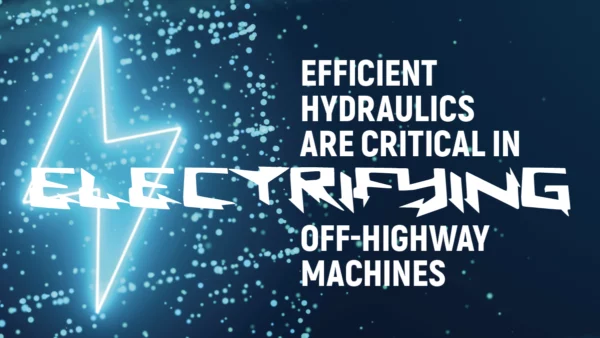Aiding in the Balancing Act: Removing the Burden of Innovation For Fluid Power Customers
By Michael Cook, Global Segment Director Off-Highway, Trelleborg Sealing Solutions.
 As fluid power professionals, from original equipment manufacturers (OEMs) to C-Parts suppliers, we are continually challenged to manage day-to-day business activities that drive the bottom line while also looking to the future. While the need to do both seems obvious, the two can sometimes be at odds. The payout from investing in development isn’t always immediate but it is necessary to keep up with advancements in technology, materials, and other industry trends.
As fluid power professionals, from original equipment manufacturers (OEMs) to C-Parts suppliers, we are continually challenged to manage day-to-day business activities that drive the bottom line while also looking to the future. While the need to do both seems obvious, the two can sometimes be at odds. The payout from investing in development isn’t always immediate but it is necessary to keep up with advancements in technology, materials, and other industry trends.
We need to look at ways to help each other formulate new solutions with minimal effects on daily business operations. One way to do this is by pursuing a shared innovation approach across the fluid power supply chain. While this may sound idyllic, as individual organizations we are committed to helping our customers respond to the demands for accelerated time to market, reduced production costs, and improved transitions from design to serial production. We should create designated spaces for innovation and work with our customers to create samples and multiple design iterations, drive more effective production methods and expedite scale-ups.
In some instances, a physical dedicated innovation space is impractical, but we can still develop high-quality engineering simulation capabilities. Good simulations and the experts to interpret them can produce better recommendations, leading to faster prototyping, improvements in predictive maintenance, and a more efficient fluid power system. At the start of a project, customers want to know the practicality of a component including how long it will function. Engineering simulations are the most effective way to answer questions about the durability of components. Testing if a system component works is generally straightforward but understanding its functional life traditionally requires long-term testing that may exceed timing constraints. Simulations can be utilized across a fluid power system, furthering the benefits of collaboration as each manufacturer will have the best understanding of their respective product’s attributes.
Regardless of our positions in the supply chain and the resources we can contribute to innovation, we all work together to provide the best products to our end users. Open communication about challenges and trends with those who drive an organization’s strategy and move ideas toward implementation is therefore critical.
Designing for sustainability should be part of these discussions. The road to long-term sustainability in the fluid power industry is just beginning, but it is essential to explore innovations that contribute to production efficiency while reducing the use of critical resources. Focusing on efforts that align with manufacturing best practices and embody a circular economy for products instead of the traditional linear approach can support a more sustainable future for the industry.
Finally, time is a precious resource for everyone. Being involved with the right things at the right times is critical. This includes investing time in industry associations like the National Fluid Power Association (NFPA) or Association of Equipment Manufacturers (AEM) and participating in future-focused industry committees and task forces. Additionally, we all need to use our resources wisely. If you have a large net to cast, cast it. If you have a global network, leverage the capabilities, and knowledge of your colleagues around the world. If your facility in the US can’t do it but your site in Europe can – make it happen for your customer. The power of many is greater than the power of one.







